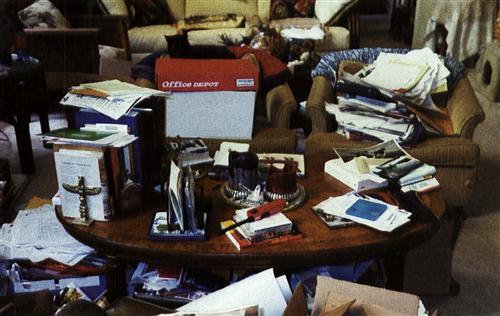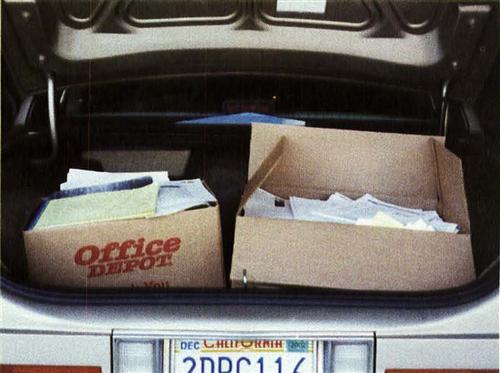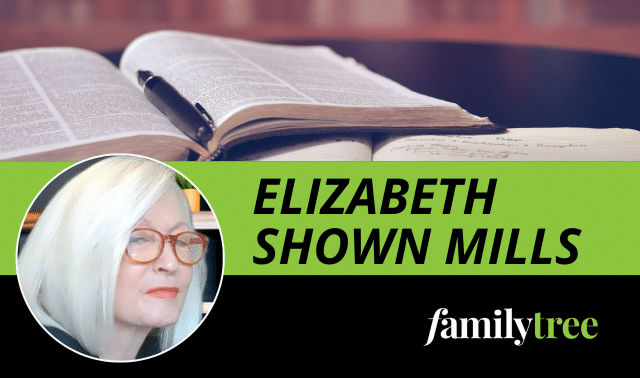Sign up for the Family Tree Newsletter! Plus, you’ll receive our 10 Essential Genealogy Research Forms PDF as a special thank you.
Get Your Free Genealogy Forms
"*" indicates required fields
You were happily researching your ancestors, finding them in one record after another. Then all of a sudden, boom! You hit a dead end. You just can’t find anything on that ancestor or family anymore — it’s as if she disappeared from the face of the earth. You feel stumped, frustrated and unsure where to turn next.
The good news is you’re not alone. You’ve hit what genealogists have come to know as a “brick-wall” problem, and sooner or later it happens to everybody.
You may be having difficulty finding out who an ancestor’s parents were, when and where someone was born or died, what a woman’s maiden name was or where an ancestor came from. Part of the problem might be that the records you need no longer exist — they’ve been lost due to theft, misplacement or disasters, such as fires or floods — or that the record was never created in the first place.
Brick walls happen once you’ve searched all of the typical existing records for an ancestor or family: census, vital records, deeds, probate, military and so on. I’ve had many beginners come to me for advice, saying they’ve hit a brick wall. My first question is always “Have you searched for this ancestor in all possible censuses?” Almost every time, the answer will be “No.” To which I respond, “Then you can’t be at a brick wall.” Make sure you’ve looked for your ancestors in all of the basic genealogical sources before you start tearing your hair out.
But when you do hit a brick wall and you’ve really done all the basics, what next? Professional genealogists, who must bulldoze through brick walls for a living, have learned ways around these seemingly insoluble problems — secrets you can apply to your own ancestral dead ends. Here are a dozen strategies that the pros use to turn roadblocks into research breakthroughs:
1. Keep a positive frame of mind.
“A brick-wall problem for me is a temporary delay,” says Paula Stuart Warren, a certified genealogical records specialist and co-author of Your Guide to the Family History Library (Betterway Books, $ 19.99). True, it’s frustrating and discouraging to come up empty-handed after going through reels of microfilm and pages of court-house books, but keeping a positive outlook is important. “Few researchers can solve every brick-wall problem,” says Marsha Hoffman Rising, a certified genealogist and fellow of the American Society of Genealogists, “But that doesn’t mean I give up.” In genealogy, patience and perseverance definitely pay off.
2. Broaden research on the problem ancestor.
Certified genealogist Suzanne McVetty was looking for the death date of Fanny Galuten, who supposedly died in Manhattan when she was about 16 years old, but no one knew when Fanny was born. Making a chronology of the family (see strategy 4), McVetty found a gap in the birth of the family’s children between 1886 and 1891 — where Fanny would fit. Next, she searched the death indexes for the years 1902 to 1907, when a 16 year-old Fanny would presumably have died. When she didn’t find anyone by that name, she broadened her search to different spelling variations of the name: Geluten, Goluten, Guluten, Jaulten and so forth. Still no luck. Next, McVetty tried broadening the geographic area of her search. Instead of looking only in Manhattan, she looked in the indexes for the other tour boroughs of New York City: Queens, Bronx, Brooklyn and Staten Island. Still unsuccessful, McVetty then broadened her search to Fanny’s siblings (see strategy 3). When she obtained the 1910 census for Fanny’s brother, McVetty found Fanny living in that household. Based on Fanny’s age in that census, she now had an estimated birth year of 1900, much later than her original estimation of between 1886 and 1891. So she went back to the death indexes for Manhattan and the Bronx, since these were the most logical places for this family, searching all spelling variations between 1910 and 1925. Finally, she found Fanny had died in the Bronx in 1914, at the age of 15.
3. Expand research to relatives and neighbors.
Emily Anne Croom, author of The Sleuth Book for Genealogists (Betterway Books, $18.99), calls this approach “cluster genealogy,” where you “study the cluster of relatives (especially children and siblings), friends, neighbors and others with whom your ancestor associated.” (For more advice from Croom on cluster genealogy, see “Group Thinking” in the December 2001 Family Tree Magazine.) If you’re not finding any records on your ancestor, perhaps other relatives or neighbors may have generated documents that will refer to your family or give you clues for new avenues to pursue, Make a list of everyone named in the records of your ancestor, such as witnesses and joint property owners. “Often, I notice individuals who are appearing frequently in the same records as the problem ancestor,” says Rising. “I can then investigate these individuals to see if their records reveal an answer to the problem” or provide clues to lead the research in another direction.
Rising was trying to identify the origins of a William Henry who’d purchased land in St. Clair County, Mo., from the federal land office in Springfield, Mo., in October 1838. He wasn’t on the 1840 or 1850 census there, nor was any deed found selling the 159 acres he acquired. He didn’t appear in any of the circuit court records. Marriage records for that period have not survived. Rising couldn’t locate any probate record, although many of those earl) records are gone as well. II he’d died in the county, she would have expected a sale of his land or an appearance of his presumed heirs. So it was more likely he’d moved away. But why had he gone there in the first place? In the short time he was there, whom did he associate with?
William Henry did create records with three men: Ebenezer Gash, who acquired land. the same day in an adjoining section, and brothers pleasant and Henry W???ow, to whom William Henry had assigned his 159 acres. This information came from the federal land records, rather than those at the county level. Gash was listed in the census as a head of household in Marion County, Mo., in 1830; further investigation into his large family showed that he lived near William Henry — who’d returned to Marion County by 1840 and died there m 1848. Further research in Marion County led to William Henry’s origin in Buncombe County, NC, the same as Ebenezer Gash.
I was at a similar dead end in researching the Irish origins of Delia (Gordon) Norris, who immigrated to America about 1885 and settled in Greenwich, Conn. None of the records I found for her, her husband or her children gave me any clues to where in Ireland she came from. So I turned to Delia’s only known relative in America, her twin sister, Mary.
All knew when I began searching for Mary was her death year, that she had died in Greenwich and that she had married a man named James Clark. But that was enough to get started. Applying the family cluster approach. I looked for any and all records on Mary Clark, hoping that a document on her might lead me to her — and her sister Delia’s — origins. I’ve found a ton of records on Man, her husband and a son. None of the records revealed their home in Ireland, but a newspaper account of Mary’s death did give me another clue: Delia and Man had another sister I didn’t even know about who came to America — Annie, who married Richard F. Hanly. So I shifted my research focus to Annie and Richard Hanly.
And that helped me bust right through the wall. When Richard became a naturalized citizen in 1917, he reported that his wife, Annie, was born in County Leitrim, Ireland, and on the birth certificate of their first child, Annie Gordon stated she was from County Leitrim. I had enough information about the three sisters to write to the heritage center in County Leitrim for a search of its record holdings. It provided me with the townland the family came from: Ardvarney.
4. Make a chronology.
Charting what you know about your quarry through the years can help solve your research puzzles. Start with the earliest date you have for an ancestor, such as a birth date or year of immigration, and make a chronological list of everything you know about that person and the immediate family. Include information you’ve documented from other sources, plus your speculations. But make sure it’s clear which is speculative information by placing a question mark after the data.
Kathleen W. Hinckley, a certified genealogical records specialist and author of Your Guide to the Federal Census (Betterway Books, $18.99), says that her “most successful strategy is to prepare a detailed chronological and geographical study of the individual or family. This strategy requires you to reorganize past research and review all previous documentation with fresh eyes, which in itself often produces new ideas. When there is a gap in time without information, you focus on that time period. If it is unknown when a family migrated from one area to another, you focus on that portion of the project.”
WHOMP! CRACK! BOOM!
The Brick-Wall-Busting Adventures of Genealogy Woman and Pet-igree
Who Are the Experts?
All the experts quoted in this article have years of research experience and education (that is, trial-and-error research, self-education, classes, seminars and conferences). Many are certified or are fellows of the American Society of Genealogists (ASG). Those who are certified have passed stringent requirements established by the Board for Certification of Genealogists and are qualified in one of six categories, such as certified genealogist and certified genealogical records specialist. ASG is an honorary organization limited to 50 members, who are known as “fellows.” ASG elects candidates based on their published genealogical scholarship.
Taking the Case
Discover more secrets of successful genealogists by reading case studies in these journals. Look for them at libraries with genealogical collections.
• The American Genealogist
Box 398
Demorest, GA 30535
• National Genealogical Society Quarterly
($50 annual National Genealogical Society membership includes subscription) 4527 17th St. N. Arlington, VA 22207 <ngsgenealogy.org>
• New England Historical and Genealogical Register
($60 annual New England Historic Genealogical Society membership includes subscription) 101 Newbury St. Boston, MA 02116 <www.newenglandancestors.org>
5. Analyze what you’ve gathered, questioning everything.
“I look at all I know and see if it can be confirmed,” says McVetty. “When I’m at a brick wall, I begin by assuming the information I have is correct, but something got recorded wrong, such as the spelling of a name, a wrong date or place.” If that strategy doesn’t work, then “I assume that there is something wrong with the information I have. Was she born when I thought she was? Is her name really Fanny? Why do 1 think she died in Manhattan? Then go from there.” In other words, question everything. Don’t assume that what you find in records — even legal documents — is correct. McVetty recommends using the “what if” approach: “Look at all the facts, then say, ‘What it she didn’t die in Manhattan? Where would the next logical place be?’”
CLICK!
Genealogy Woman and Pet-igree search for alternative sources.
6. Look for alternative sources.
If you’re new to genealogy, you may not realize all the different types of records out there for you to research. Don’t get stuck in a genealogical rut, thinking all that’s available is what’s on the Internet or in the usual sources: vital records, censuses, deeds, wills, passenger lists and the like. Also, it you’re researching in the South, chances are good that you’ll hit a “burned county” sooner or later — that is, the courthouse burned and some, if not all, the records went up in smoke. Consider alternative sources such as city directories, tax records, property assessments, estate inventories and settlements, criminal cases, court minutes, coroner’s files, commitment papers, newspaper items, business and employment records — the list is endless. Not every type of record exists for every time period or place, of course. But as Patricia Law Hatcher, a certified genealogist and fellow of the American Society of Genealogists, suggests, you need to “sit yourself down in the place where you know your ancestor and family lived and don’t leave until you’ve looked at every word of every record that is connected to the extended family (not just the ancestor), neighbors and associates.”
7. Follow every clue and lead.
Rising believes that “success in overcoming a brick-wall problem comes from assembling as many records as possible and examining each of them carefully for subtle clues (obvious ones you’ve presumably already investigated). Assemble the subtle clues, looking for patterns, repetitions of people and events, and gather the records from those cities.”
Certified genealogical records specialist Marcia Wyett was looking for the parents of Clara Crowther. All the records she’d gathered on Clara said she was born in Kansas. Yet Wyett couldn’t find Clara’s parents in the 1900 federal census Soundex (a census index that groups together similarly spelled names; see <www.familytreemagazine.com/soundex.html>) for Kansas. Clara was married in Arkansas, and her children were horn there, so Wyett next checked the 1900 Soundex for Arkansas. No luck. Wyett then located Clara in the 1920 federal census, which said Clara’s children were born in Oklahoma, not Arkansas, Nothing in any of the other records Wyett had gathered — census, birth records, death records, railroad retirement files, marriage records — indicated that Clara had ever lived in Oklahoma. Was this a census laker’s error or a new lead? Assuming it was a lead, Wyett checked the 1900 Soundex for Oklahoma. Sure enough, Clara was there, living with her mother, and it turns out her father had died by 1900.
From Mess to Success
Here’s another secret of successful genealogists: They’re organized. You won’t get far if you can’t find your research notebook and charts!
Of course, getting — and keeping — your research in order is a challenge for even the tidiest family historian. So, in the April 2002 issue of Family Tree Magazine, we kicked off a contest to help paper-plagued genealogists. Readers were invited to send tales and photos of their family history-filing disasters — the three most convincing would win some much-needed expert organizational assistance.
Two runners-up, Brenda Seekins of Hartland, Maine, and Dorothy Akin Jens of Seneca, SC, each received a copy of my book Organizing Your Family History Search. The winner, Lindy Sheehan of Solana Beach, Calif., received an organizational makeover from me. Here’s how Lindy described her problem:
“When I first began my quest for my ancestors in 1994 BC (before computers), I was organized. Since I went online in 1995, the piles really began to materialize. Now the piles… and boxes are stashed everywhere, including the trunk of my car. Things got even worse when I moved in with my elderly father two years ago, since he is the neatest person I ever met. Piles of papers were not tolerated, so I had to get clever. When he turned 90, he gave up driving, thankfully, and gave me the keys to his car. Immediately, two boxes of genealogy papers were put in the trunk…. Next, I began shoving boxes of papers under his bed…. Now it has gotten to the point where I have lost track of what I do and do not have…. The last straw was when I realized it would probably take less time to order another copy of a death certificate than it would take to find it in the multiple boxes and piles I have stashed in the house, garage and the cars. Help me! Please!!!”
Sound familiar? I think we’ve all run into the problem of being taken over by paper at one time or another. Here’s what I suggested to Lindy:
Short-Term Plan
1. Set up file folders according to surname and type of record: SMITH: Census Records, SMITH: Birth Records, SMITH: Marriage Records and so on. Make file folders for the records you think you’ve collected; you can always create another file if you find a record you didn’t realize you had.
2. Once you’ve made up the basic file folders, tackle one stack or box a week — no more and no less. Even if you get through a box and think, oh, I can do another one, don’t. You want to have a feeling of accomplishment each week, so it’s important to finish a stack or box each week and not leave one half finished.
Long-Term Plan
1. After you’ve gotten all of the paper in your stacks and boxes into their respective files, you can organize the documents within the file.
2. After you get the papers within the file folder organized, go through the information in the files and make sure you’ve got everything recorded on your charts.
Here’s how Lindy has progressed with her organizational makeover:
“I love all your suggestions, and when I get back from the family reunion, I plan to dive into this mess and get it organized. You really have given me the tools to work with. I have purchased more file folders and am attempting to organize some of this disaster as I look for items. I sold my dad’s car, so I need to get the boxes out of the trunk before the new owner drives off with them.”
For more guidance on getting your research in order, see “Winning the Paper Chase” in the April 2002 Family Tree Magazine and Organizing Your Family History Search (Betterway Books, $17.99).
– Sharon DeBartolo Carmack
When the Puzzle Is a Picture
Perhaps one of the most common brick-wall problems is identifying people in a photograph. You’ve shown it to relatives, and no one seems to remember just who that pretty lady standing on the boardwalk is. Maureen Taylor, author of Uncovering Your Ancestry through Family Photographs (Betterway Books, $18.99), cautions: “Little can be gained by looking at vital records and censuses until you have a tentative identity. I use a worksheet for the photograph, and use a magnifying glass to examine the picture a little at a time. I have to find out if a photographer’s name appears on the image, date the clothing, and see if there are any clues in the background.” Taylor helps solve readers’ family-photo mysteries in her online column at <www.familytreemagazine.com/photos/photohelp.htm>.
8. Show the problem to another genealogist.
Having someone with a fresh outlook study the problem may help break through your brick wall. Keep in mind that everyone’s family history is different, so everyone’s research experience and knowledge are somewhat different. Another genealogist may hone in on something you’ve overlooked completely, This is an important reason to attend and network at local genealogical society meetings, classes, seminars, conferences and on the Internet. Even professionals do this kind of networking: When they’re Stumped, they’ll turn to a colleague or friend and ask for advice. The old adage of “two heads are better than one” certainly applies to family tree research.
You might want to consider hiring a professional genealogist for a consultation on your research problem. If so, you’ll need to have all of your research organized and well-documented for the most economical use of your money and the professional’s time. Depending on the extent of the research you’ve already done, it may take a professional only a few hours to review the information and provide you with suggestions to further your research. To find a professional, check the online directories for the Association of Professional Genealogists at <apgen.org/directory> and the Board for Certification of Genealogists at <bcgcertification.org/associates>.
9. Study the social history.
Another strategy for breaking through the wall is to study social histories of your problem ancestor’s ethnic group, time period and place. Social histories, such as Alice Morse Earle’s Home Life in Colonial Days (Berkshire House Publishers, $14.95) or Steven Mintz and Susan Kellogg’s Domestic Revolutions: A Social History of American Family Life (Free Press, $19.95), give accounts of everyday people and their everyday lives. These types of books won’t list your ancestors by name, but they will give you clues and insight into the lifestyles of people like your ancestors and what motivated them to behave in a certain manner, which may affect your research direction. For more on using social history in genealogy, see Katherine Scott Sturdevant’s Bringing Your Family History to Life through Social History (Betterway Books, $ 19.99) and “The Big Picture” in the February 2002 Family Tree Magazine.
For example, I learned from social histories on Italian-Americans that it was quite common for the man to immigrate first and bring his family to America up to five or 10 years later. Many of these men originally had no intention of staying in America; their goal was to earn enough money to go back to Italy and buy land. Dubbed “birds of passage,” they had a high return-migration rate; in other words, they went back and forth between Italy and America.
Once I found Albino DeBartolo on a passenger arrival list for 1905, even though his family didn’t arrive until 1913, I went back to the passenger arrival lists’ index to see if he fit the pattern of a returnee. Sure enough, he did. He made two more trips back and forth to Italy between 1905 and 1913. Had I not broadened my research to social histories and learned the typical migration pattern for this ethnic group, I might have missed these additional records on him. For more on how social history assists specifically in immigrant research, see my book A Genealogist’s Guide to Discovering Your Immigrant and Ethnic Ancestors (Betterway Books, $18.99).
10. Read case studies.
By reading and studying how others have overcome their obstacles, you can apply similar techniques or sources to your own research. “Everyone should subscribe to a variety of printed and online genealogical publications, and, in addition, read whatever back issues you can,” advises Warren. “A local genealogical society may exchange publications with others from across the country. I have found much insight in old issues of genealogical and historical publications that aren’t even from one of my ancestral areas.”
Read genealogical journals such as the National Genealogical Society Quarterly and The American Genealogist (see box, page 41) or guidebooks with case studies, such as Croom’s Sleuth Hook. A case study may relate to your research because the family in the article is from the same geographical area or of the same ethnic background. Or the articles may help you to see how other genealogists think and approach difficult research cases. From the footnotes or endnotes, you may learn about new record groups and sources or ones that you may not know about or maybe haven’t considered. Even reading the book reviews can help: I discovered a book by John A. Brayton titled The Five Thomas Harrises of Isle of Wight, Virginia (privately published), while reading book reviews. This book was highly recommended by the reviewer and deals with a topic that every researcher encounters sooner or later: sorting out different men with the same name, who are about the same age and living in the same community. Reading a book like this, even though it doesn’t deal with your family, will give you ideas and methods for tackling similar problems.
11. Ignore the problem and it will go away.
One of the best strategies I’ve found for overcoming brick walls is to ignore the problem, in which case it will probably go away. Put your research on that family or ancestor on hold for at least six months to a year. Don’t think about it. In the meantime, work on other family lines. It’s amazing what you’ll see with fresh eyes when you pull out the information after a long break. You’ll be mentally slapping your forehead and saying, “Why didn’t I notice that before?” You’ll find clues and sometimes outright answers staring you in the face — facts you were blind to while in the heat of the search. Sometimes, it really helps to step away from the problem in order to see it clearly; then go back and try, or retry, the brick-wall strategies.
Plus, your knowledge will have changed and grown in that six to 12 months of abstinence. If you’ve been working on other family lines in the interim — which, of course, you should — your experience from that research may help you with your brick-wall case. You also should be reading constantly and attending genealogical society meetings, seminars, classes and conferences to expand your knowledge.
12. Find the end of the road.
It’s a genealogical fact of life that we might never find a record that directly answers a brick-wall question. “Instead, you may need to piece together the best possible answer from the evidence you find in your research,” explains Croom. “Gather enough evidence to make a convincing argument and explain any conflicting evidence.”
Granted, some research brick walls may never come crumbling down. But you don’t know until you’ve tried different strategies — or a combination of strategies — for breaking through them. I’ve often encountered people who’ve spent 20 years searching for a woman’s maiden name; eventually they do discover it. Solutions to brick-wall problems take time, patience, following hunches and the willingness to try different strategies. But whatever you do, don’t give up. Maybe you just need a bigger bulldozer.
AHA!
Our superheroes find the end of the road.

From the December 2002 issue of Family Tree Magazine.









